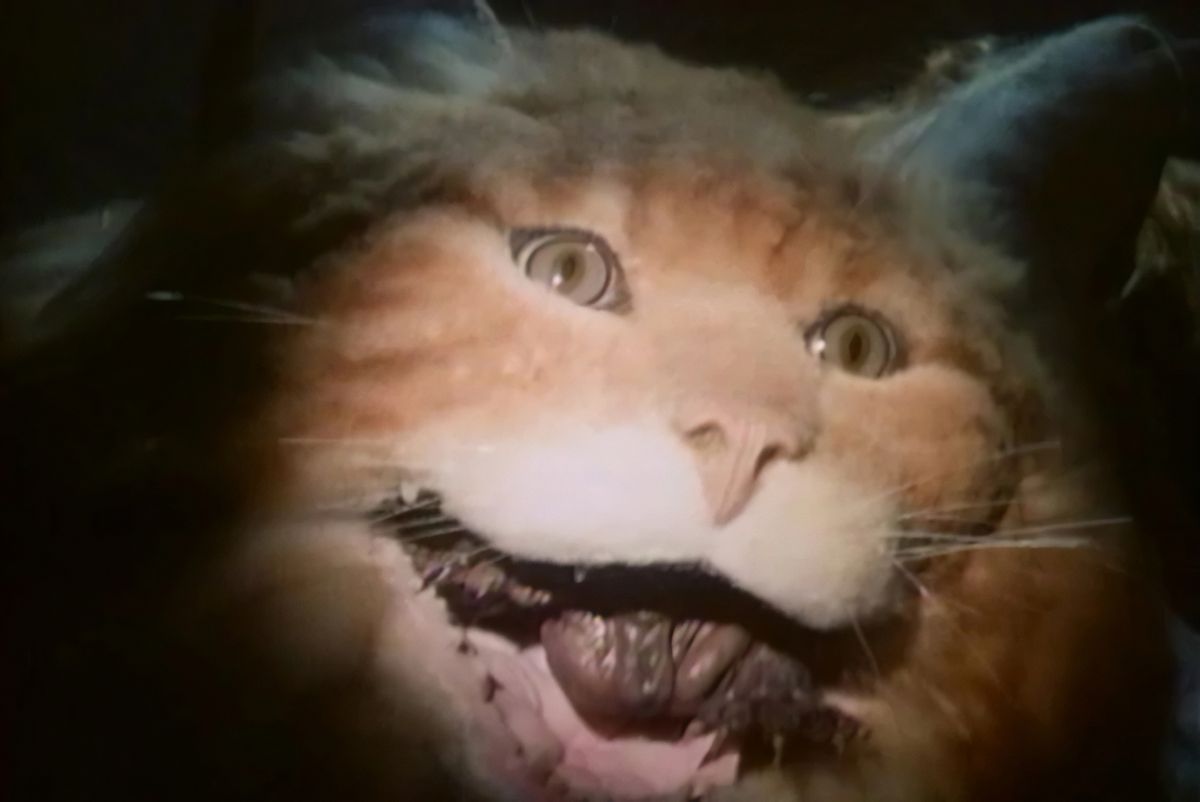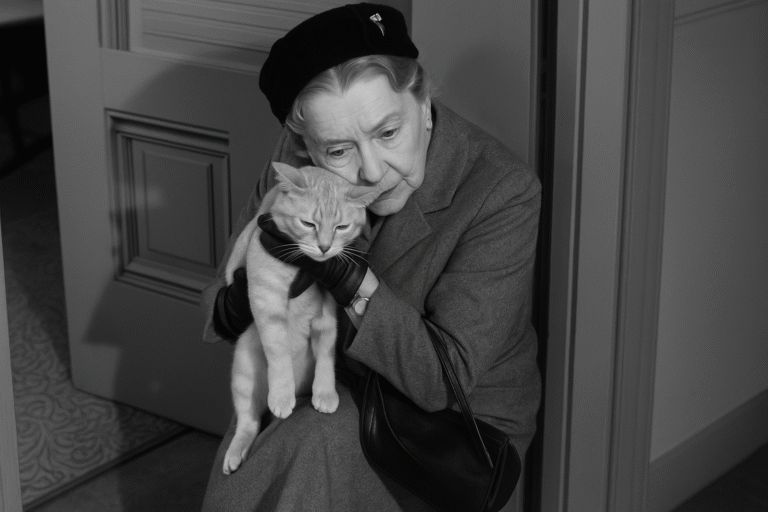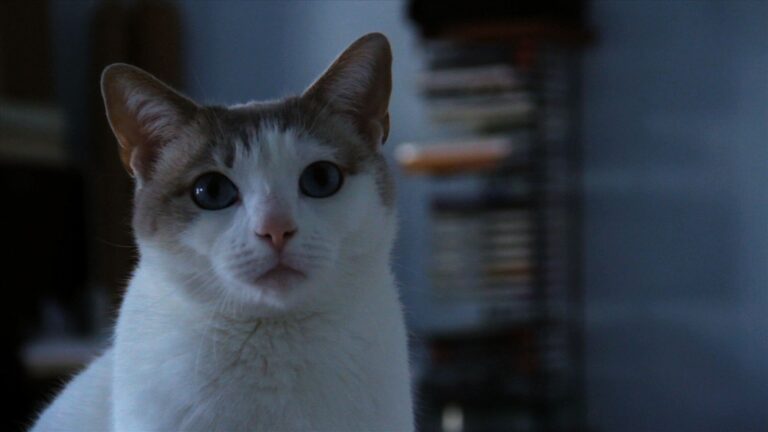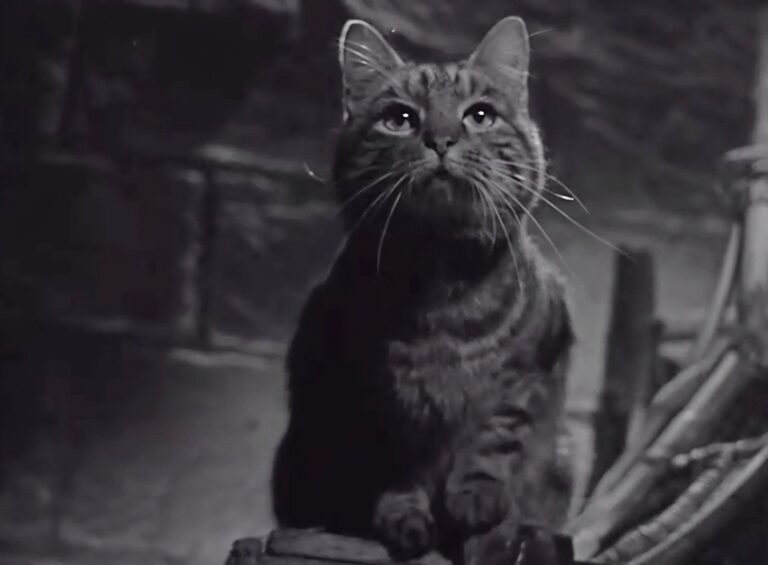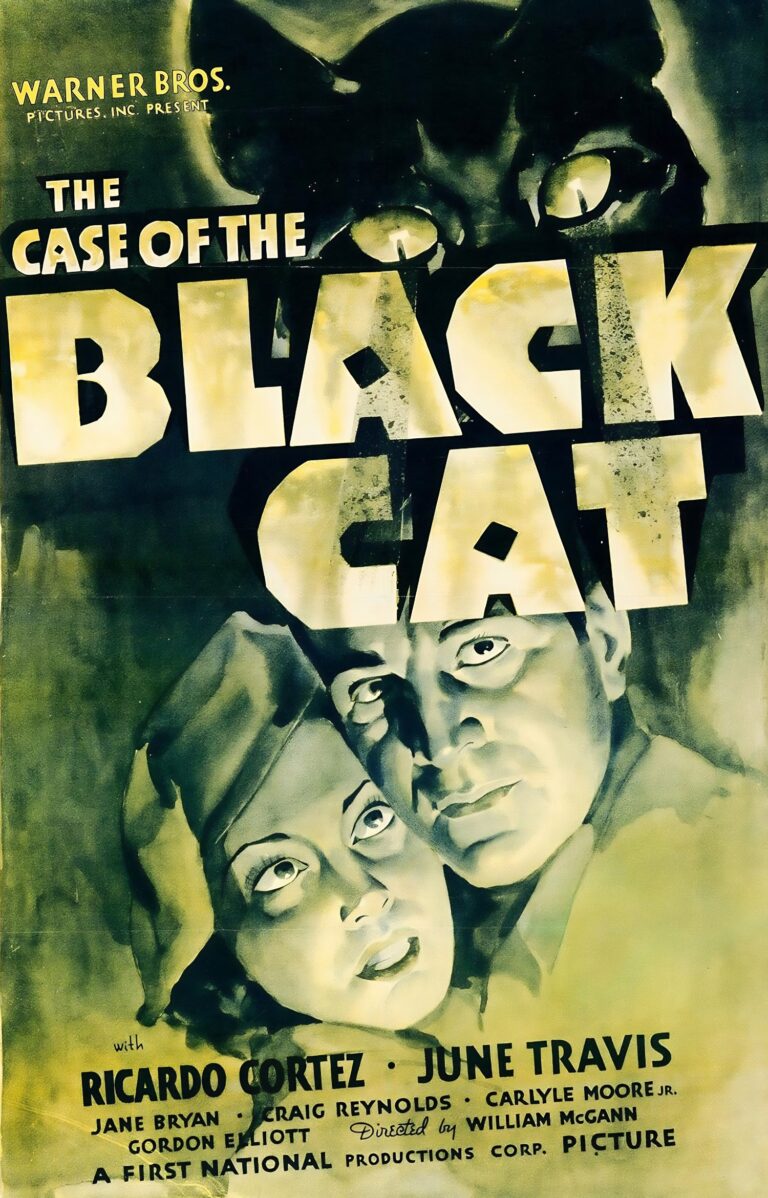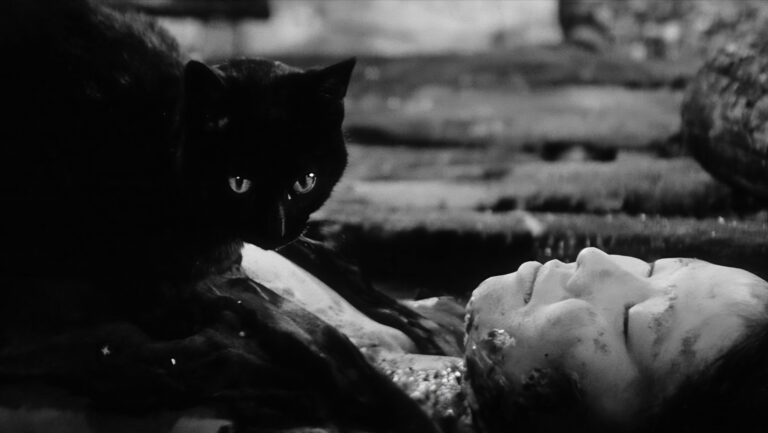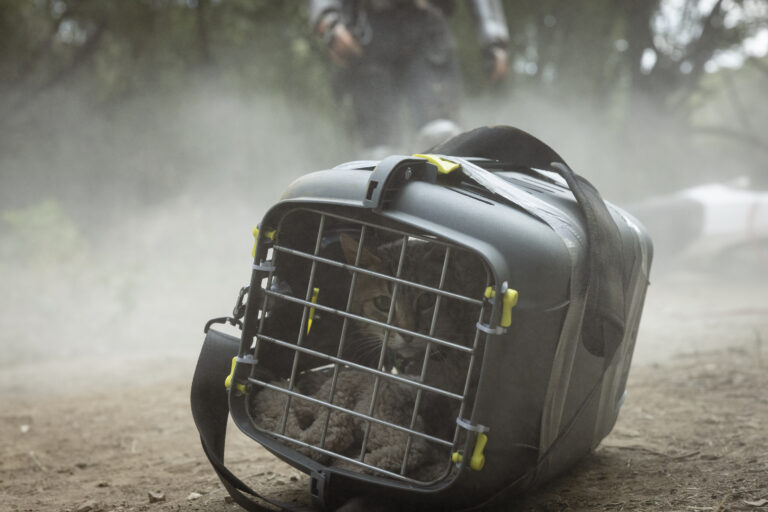Uninvited (1988)
In Greydon Clark’s Uninvited (1988), a killer mutant cat terrorizes a group of unsuspecting partiers aboard a luxury yacht.
Uninvited
Alternate title: Killer Cat
Director: Greydon Clark
Country: USA
In his autobiography, On the Cheap: My Life in Low Budget Filmmaking, American director/producer Greydon Clark states, “Any picture can be made for any amount. It is just the compromises we’re willing to make.” His methods align with those of the late Roger Corman, as he knows how to get a movie produced regardless of budget, timing, or circumstances. His techniques are remarkably inventive. On top of that, every one of his movies is entertaining and well-made considering his limited resources. His cat-centric horror movie Uninvited is a perfect example of these qualities. It is also a lot more fun than the average low-budget horror film.
Uninvited was a turning point in Clark’s career since this was his first direct-to-video production. Until then, his career had been on an upward trajectory, with each film bringing in bigger budgets, more prominent stars, and valuable industry knowledge. However, Reagan’s Tax Reform Act of 1986 eliminated many tax shelters used by investors to finance films. This change led to a decline in private investments and forced studios to seek alternative funding sources. To continue making movies, he had to shift to extremely low-budget direct-to-video projects, which he intended to self-finance. It had been almost two years since his last film, Final Justice (1984), when Doug Witkins, who ran a foreign distribution company, Amazing Movies, reached out. He relayed an offer from a Scandinavian buyer who had profited from distributing Without Warning (1980). He was willing to provide a $100,000 advance for a new horror film by Clark, with potential for additional revenue from other foreign markets.
Clark spent the next few weeks developing the story for Uninvited. He considered returning to Malta, where he had filmed Final Justice. He wanted to use its tank and set the film on a luxury yacht with a poisonous rat menacing the passengers. His wife, Jackie, liked the idea of a creature terrorizing people on a yacht but suggested a more unique monster. “As usual, I started with my characters. Who is the good guy, and who is the bad guy?” Clark writes in On the Cheap. “I visualized a luxurious Onassis-type yacht and needed someone wealthy to own it. What if… my antagonist was a corrupt Wall Street trader escaping with stolen funds, sailing out of South Florida to the Cayman Islands? My protagonists could be young college students on spring break. If the movie took place on a yacht, the creature would have to be small. What about a rabid dog? That has been done a thousand times. What about a cat? How could I make a sweet little cat become a unique monster? What if… my cat was a laboratory animal that escaped and somehow turned vicious?” By the end of 1986, Clark had completed the first draft of his screenplay for Uninvited. To have additional funding, Clark put another lien on his house—something he had started doing to help finance some of his films.
After finishing the script, Clark turned to a mix of seasoned actors and rising talent to bring his story to life. Early in his career, he prioritized casting the best actors rather than the most recognizable ones, an approach that allowed him to work with people who would later achieve fame. David Caruso, for example, earned his entry into the Actors’ Guild through Clark’s film Without Warning. Of all the inexperienced cast members in Uninvited, Rob Estes (playing Corey, the business student who admires the swindling stock manipulator) became the most celebrated, mainly for his roles on TV. shows like 21 Jump Street and Melrose Place. As his budget increased, Clark allocated more funds to cast household names, which enhanced the film’s credibility and quality. For Uninvited, Clark spent most of the budget on three legendary stars to portray the dishonest magnates: George Kennedy, Clu Gulager, and Alex Cord. Kennedy is best known for his Oscar-winning role in Cool Hand Luke (1967). Gulager starred in TV series like The Tall Man (1960-1962) and The Virginian(1963-1968), as well as the horror classic The Return of the Living Dead (1985) and Quentin Tarantino’s Once Upon a Time in Hollywood (2019). Cord, known for horror movies Chosen Survivors (1974) and The Dead Are Alive (1972), played the third greedy businessman, replacing Tony Franciosa, who Clark dropped after he heard the man was difficult to work with and would exceed the budget. Clark could only afford to pay these well-known actors for a few days, which meant their characters were killed off early. However, this allowed our mutant cat to take over the proceedings.
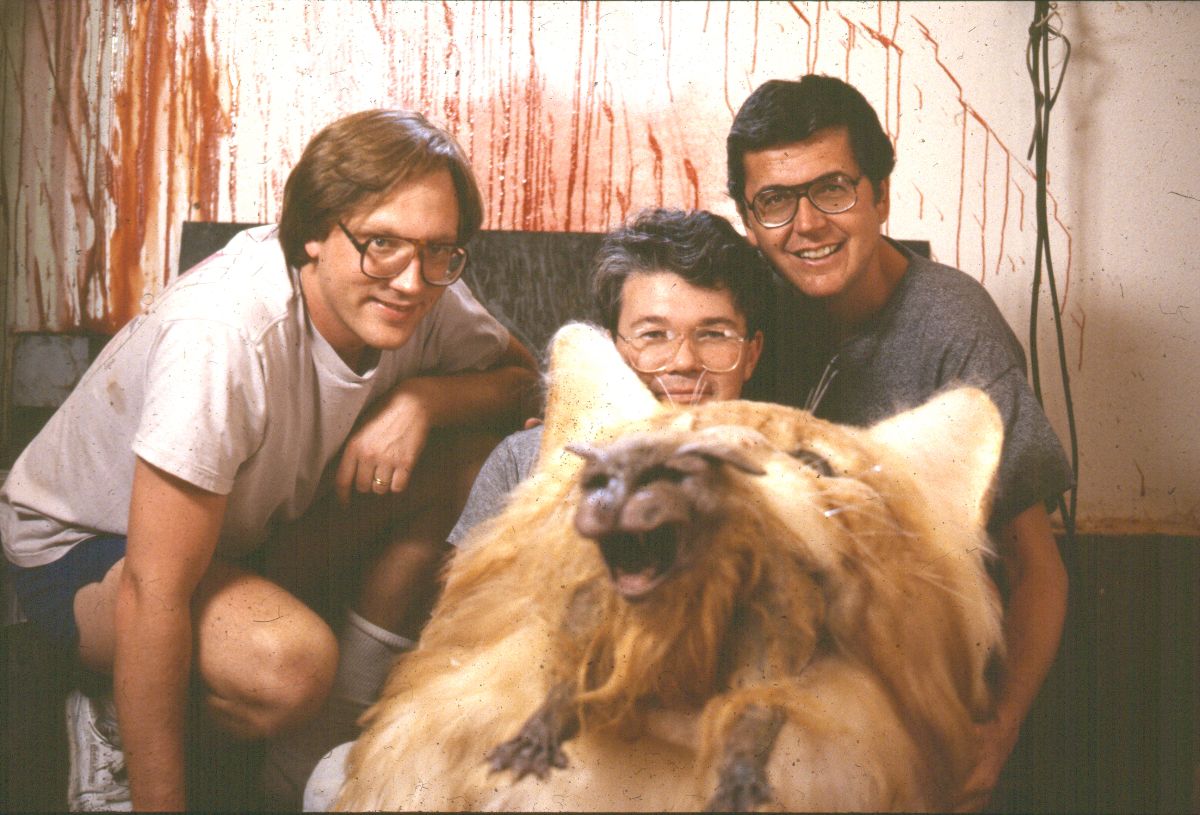
Clark wanted a normal-looking cat for his monstrous feline and chose a fluffy ginger tabby from his animal trainer, Carl Miller. The challenge was transforming this sweet animal into a hideous, lethal monster long before the era of digital effects. Clark envisioned it as a victim of high-tech military laboratory experiments, and the movie begins with our feline escaping a laboratory doctor (played by Clark). When agitated, the monster inside (resembling one of the secondary ghoulies) would force its way through the cat’s mouth. For this, Jim and Jean Boulden created a puppet of the cat about ten times its actual size, allowing them to push the creature (made by Allan A. Apone, with whom Clark had previously collaborated on Without Warning) through its mouth. Clark also enlisted Apone to depict blood bursting from bodies because whenever the mutant cat bit someone, it poisoned their blood, causing a gruesome death.
The production’s biggest challenge was finding the ship. The plan was to use a real yacht for filming in the Mediterranean and then build portions of it in a tank in Malta for most of the shooting. He saw a dozen different boats, but none matched his vision. They mainly were fishing boats with only one or two cabins below deck. Instead, the film required a large, luxurious yacht with staterooms, expansive decks, and a spacious engine room.
Eventually, he found one that had been moored at the San Pedro docks for almost a year. This yacht was more than half the length of a football field, with multiple decks, a large stateroom, a captain’s deck, a vast engine room, and a spa on one of the upper decks. He secured the yacht for a location fee of $15,000 for 15 days, plus $300 a day for each additional day out at sea, which included payments for the captain and crew. However, there was one problem: the ship was already sold and would leave for Seattle in two months. It was a tight deadline, especially with everything still needing to be arranged.
After a quick budget rewrite to maximize the use of the vessel, especially the spa on the upper deck, Clark finalized the crew and scheduled 15 days for filming, starting in the first week of June 1987. They began with scenes of the college students meeting the three business people in the lobby of the Hollywood Roosevelt Hotel, which stood in for a South Florida location. Mike Starita came from Denver to appear as one of the extras. The production swiftly moved to all the scenes on the yacht, except those set in the stateroom. Then they headed out to sea.
In the third act, a violent storm causes the yacht to sink. The scenes in the stateroom before and after it flooded needed a practical set. Major studios were charging over $50,000 daily to use their tanks; independent soundstages had no water tanks at all. Eventually, Clark built the stateroom set in his garage for the pre-flood scenes, then moved it to the shallow end of his swimming pool for the flooded scenes. Since the sinking scenes were filmed at night, only the lit areas would be visible on camera. Actors could wade through the shallow water, creating the illusion of a half-flooded stateroom. Problem solved.

He ended the shoot by filming close-ups of the monster emerging from the cat’s mouth, detailed shots of throbbing blood vessels, and the final scene featuring Clark’s five-year-old son Trevor, who picks up the cat on the beach.
Clark saved tens of thousands in post-production by using dailies on videotape. He used an inexpensive videotape editing system, eliminating the need for traditional film editing equipment like a Moviola, sync block, film splicer, benches, and film racks. Clark edited the film himself in a spare bedroom and even cut the sound effects using the video editor. For the music, he collaborated with Dan Slider, who had scored a few low-budget films on his home computer. Slider’s ability to create the entire score without a studio or hired musicians allowed him to produce a great score for $2,500. Clark completed production on schedule and budget (less than $250,000), and the movie raked in around $500,000 from foreign, direct-to-video, and world television.
Photos courtesy of Greydon Clark.
Find Uninvited (1988) on Amazon!
About the author
Vanessa Morgan is the editor of When Animals Attack: The 70 Best Horror Movies with Killer Animals, Strange Blood: 71 Essays on Offbeat and Underrated Vampires Movies, Evil Seeds: The Ultimate Movie Guide to Villainous Children, and Meow! Cats in Horror, Sci-Fi, and Fantasy Movies. She also published one cat book (Avalon) and four supernatural thrillers (Drowned Sorrow, The Strangers Outside, A Good Man, and Clowders). Three of her stories became movies. She introduces movie screenings at several European cinemas and film festivals and is also a programmer for the Offscreen in Brussels. When she is not writing, you will probably find her eating out or taking photos of felines for her website, Traveling Cats.
This essay on Uninvited (1988) was previously published in the book Meow! Cats in Horror, Sci-Fi, and Fantasy Movies.
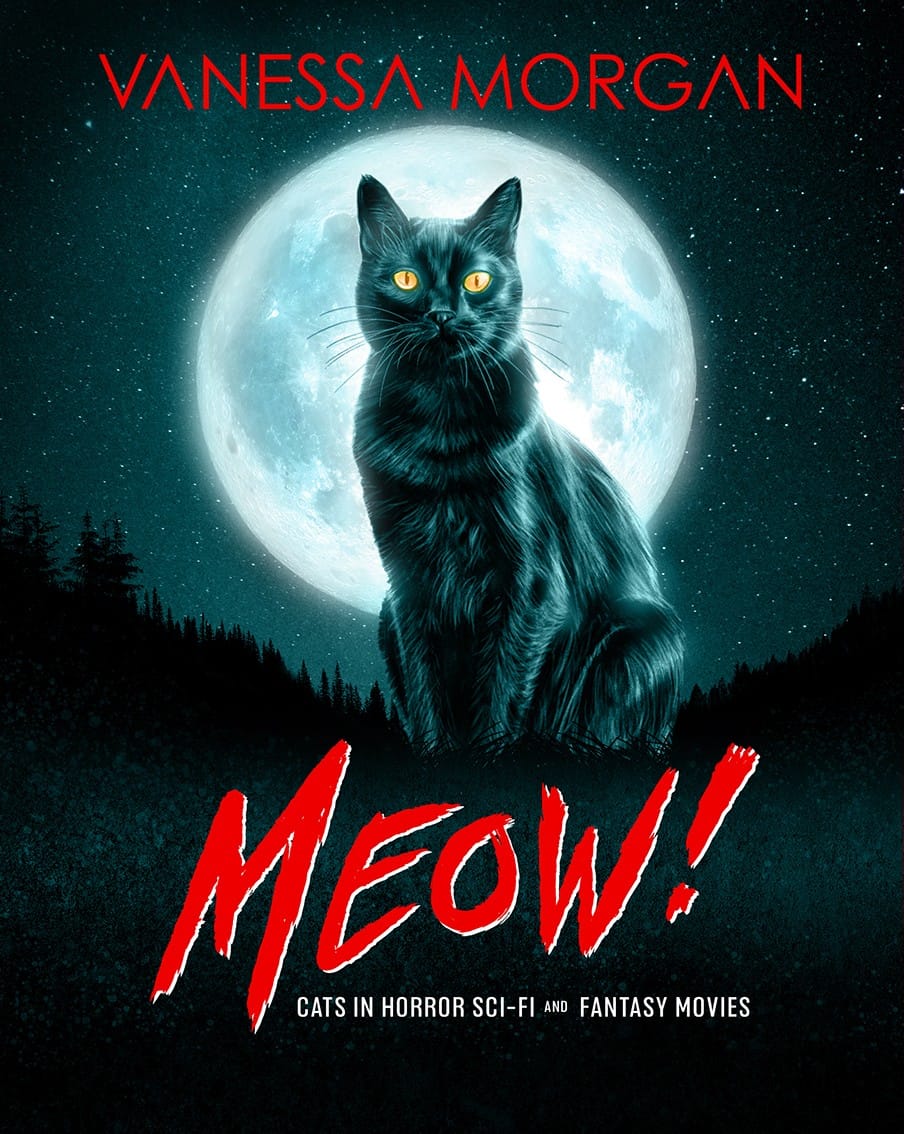
You can read another essay about Uninvited in the book When Animals Attack: The 70 Best Horror Movies With Killer Animals.
